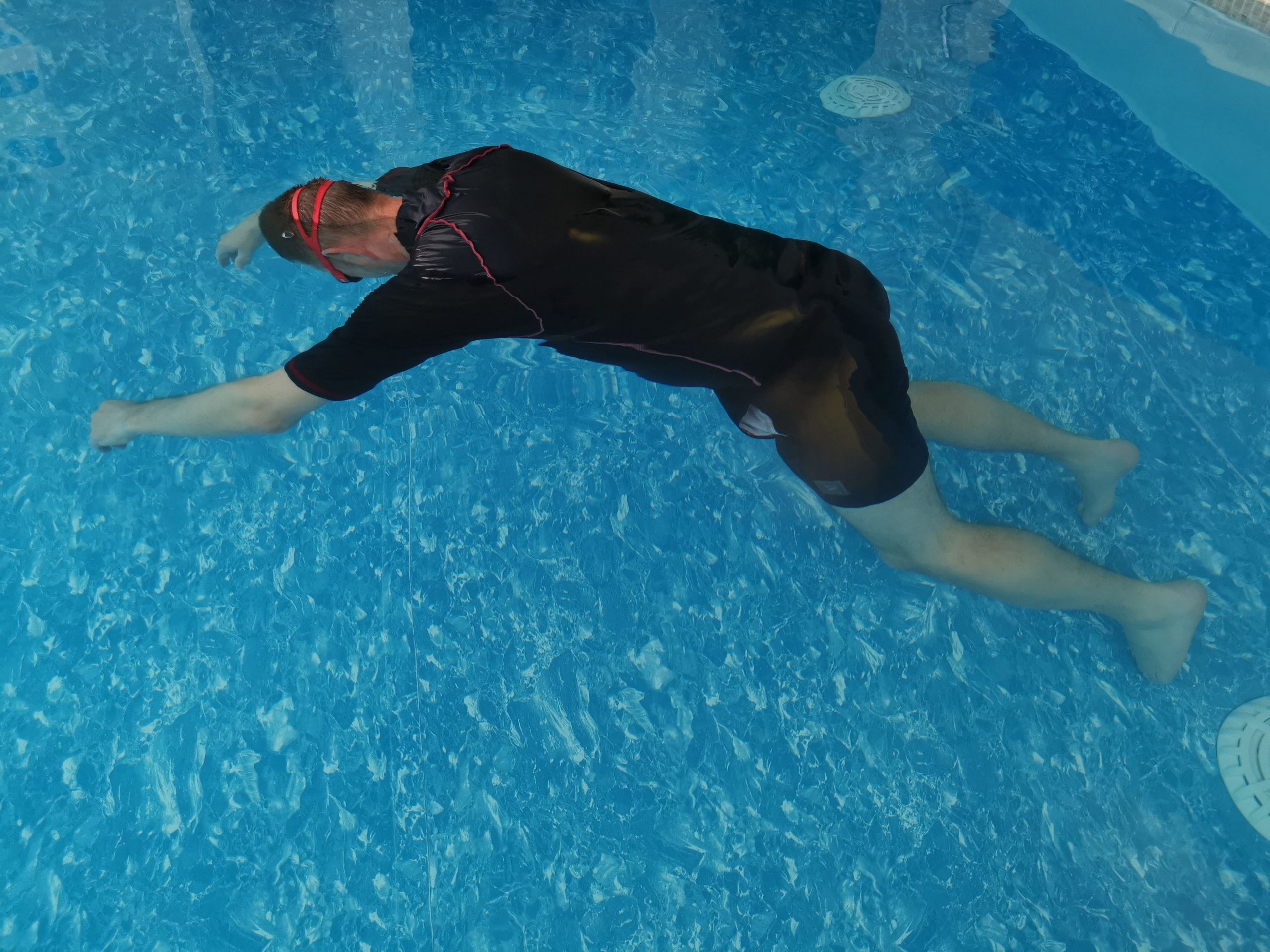If there’s magic in the water, three simple activities may help you find it.
1. Floating face down
2, Sitting, letting yourself drop vertically towards the pool floor
3, Falling through the water into a glide
Practising these non-doing activities can give you a real connection with the water. It can bring about integrity of head, neck and back and a sense of inner quietness. It can help calm your nervous system and wake up your cardiovascular system without stressing it.
1 Floating face down is a positive act of giving yourself to the water. When you release your head into the water, your spine gets a chance to lengthen. The water takes the weight of your head which gently moves out of your neck and back.
2 Sitting or dropping vertically as if to sit on the floor is somehow less controlled, more passive. When you allow yourself to drop under the surface, you experience buoyancy of your head in a different way from floating face down.
Because we spend most of our time vertical on dry land, floating like this gives us a glimpse of the lightness and freedom we get from letting our head go up out of our body.
As you drop towards the floor, looking forwards, your head wants to float upwards towards the surface. So as you send your bottom down, your head goes up. This releases your neck.
Don’t confuse this with trying to sit on the floor. The point is to allow yourself to drop, not to force yourself down.
3 Gliding. After freeing your neck by floating, gliding is an excellent activity in its own right, not just preparation for swimming.
You may find there’s lots to think about to make gliding smoother.
Am I shortening my neck, because I want to look forward or because my shoulders are overactive in keeping my arms out in front? (Look at the fish. Direct arms forwards with fingers going away from shoulders. Try gliding with your arms by your side).
Can I regain my feet without tightening my neck and losing my balance? (Watch your feet landing on the floor and stay there for a moment instead of standing up).
Problems arise as a result of trying too hard to get somewhere. But if you experiment with the glide as an act of submission, they tend to go away.
If you think of the glide as floating on the move, or falling through the water to move forward, it carries the same sense of liberation as the previous two activities.
I think these are the most beneficial swimming activities for everybody. If you’re a non-swimmer, these are the things I would encourage you to learn. For swimmers they make a trip to the pool worthwhile.


